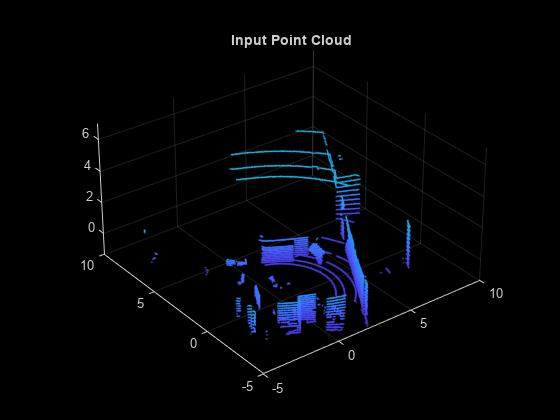detectRectangularPlanePoints
Detect rectangular plane of specified dimensions in point cloud
Syntax
Description
ptCloudPlanes = detectRectangularPlanePoints(ptCloudIn,planeDimensions)ptCloudPlanes, of specified
dimensions, planeDimensions, from the input point cloud
ptCloudIn.
[
detects rectangular planes from a set of point clouds, ptCloudPlanes,ptCloudUsed] = detectRectangularPlanePoints(ptCloudArray,planeDimensions)ptCloudArray. In
addition, the function returns a logical vector, ptCloudUsed, that
indicates the point clouds in which it detected a rectangular plane.
[___] = detectRectangularPlanePoints(
detects rectangular planes from a set of point cloud files,
ptCloudFileNames,planeDimensions)ptCloudFileNames, and returns any combination of output arguments
from previous syntaxes.
[
returns indices to the points within the detected rectangular plane in each point cloud, in
addition to any previous combination of arguments.ptCloudPlanes,ptCloudUsed,indicesCell] = detectRectangularPlanePoints(___)
[___] = detectRectangularPlanePoints(___,
specifies options using one or more name-value pair arguments. For example,
Name,Value)'RemoveGround',true sets the 'RemoveGround' flag to
true, which removes the ground plane from the input point cloud before processing.
Examples
Input Arguments
Name-Value Arguments
Output Arguments
Version History
Introduced in R2020b


